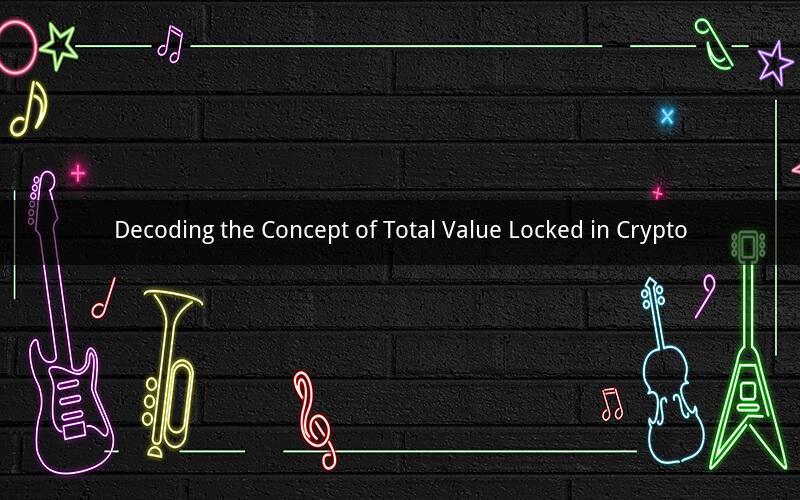
The cryptocurrency industry has seen exponential growth in recent years, and with it, the term "Total Value Locked (TVL)" has become increasingly popular among investors and enthusiasts. But what exactly is Total Value Locked in crypto? In this article, we will delve into the intricacies of TVL, its significance in the crypto world, and how it can be used to assess the health of a project.
What is Total Value Locked in Crypto?
Total Value Locked, often abbreviated as TVL, refers to the total value of cryptocurrency assets locked within a particular protocol, platform, or decentralized finance (DeFi) project. These assets are typically locked in smart contracts or staking mechanisms, and users can participate in yield farming, liquidity mining, or other governance activities to earn rewards.
The TVL figure provides a quick snapshot of the liquidity and market capitalization of a DeFi project. It indicates how much capital is flowing into a project and the level of investor confidence in its ecosystem. Projects with higher TVL are generally considered more stable and reputable.
How is Total Value Locked Calculated?
Calculating the Total Value Locked in a crypto project is relatively straightforward. The process involves determining the market value of all tokens locked within the project and summing them up. Here’s a step-by-step guide on how it’s done:
1. Identify the tokens: First, list all the tokens that are locked within the project. This may include the native token, as well as various governance tokens, liquidity tokens, and other tokens issued by the project.
2. Determine the supply: For each token, find out its total supply. This information is usually available on the project’s official website, whitepaper, or blockchain explorer.
3. Calculate the market value: Multiply the supply of each token by its current market price. This will give you the market value of each token.
4. Sum up the values: Add the market values of all tokens to get the Total Value Locked for the project.
What are the Key Components of TVL?
Several components contribute to the Total Value Locked in a crypto project. Understanding these elements can help you gauge the health and growth potential of a project. Here are some of the key components:
1. Liquidity Providers: Liquidity providers are individuals or entities that deposit their tokens into a liquidity pool. In return, they earn fees and rewards for providing liquidity to the platform. The value of their deposits constitutes a significant portion of the TVL.
2. Staked Tokens: Users who stake their tokens within a project can participate in governance decisions and earn rewards. The value of these staked tokens is also a component of TVL.
3. Yield Farmers: Yield farming is a process where users lock up their tokens in a DeFi protocol to earn rewards. The value of tokens locked in yield farming activities contributes to the TVL.
4. Governance Tokens: Some projects issue governance tokens that allow users to vote on critical decisions affecting the project. The value of these tokens is also included in the TVL.
5. Native Tokens: The value of a project’s native token is an essential component of its TVL. The more people hold and lock up the native token, the higher the TVL will be.
Why is Total Value Locked Important?
The Total Value Locked figure is an essential indicator of a DeFi project’s success. Here are some reasons why it’s crucial:
1. Market Confidence: A higher TVL indicates that more investors are willing to commit their capital to a project, which can boost its market confidence.
2. Liquidity: Projects with higher TVL generally offer better liquidity, making it easier for users to trade tokens within the ecosystem.
3. Growth Potential: A project with a rapidly increasing TVL is likely to attract more users and investors, leading to further growth and potential success.
4. Health Indicator: The TVL can be used to assess the overall health of a DeFi project. A stable and growing TVL suggests a healthy and sustainable project.
5. Investment Decision: Investors often use the TVL as a factor when deciding whether to invest in a DeFi project.
5 Questions and Answers about Total Value Locked in Crypto
1. Q: How does Total Value Locked differ from market capitalization?
A: Total Value Locked is the value of assets locked within a DeFi project, while market capitalization refers to the total value of a project’s native token across all exchanges.
2. Q: Can a project’s TVL decrease?
A: Yes, a project’s TVL can decrease if users withdraw their tokens from the platform or if the price of the tokens decreases significantly.
3. Q: What is the difference between TVL and liquidity?
A: Total Value Locked is the overall value of assets locked within a project, while liquidity refers to the ease of trading tokens within the project.
4. Q: Can a project’s TVL grow too quickly?
A: Yes, a rapidly increasing TVL may indicate excessive speculation or a pump-and-dump scheme. Investors should be cautious when a project’s TVL grows too quickly.
5. Q: Is Total Value Locked a reliable indicator of a project’s success?
A: While TVL is a useful indicator, it should not be the only factor considered when evaluating a DeFi project. Other aspects, such as the project’s technology, team, and roadmap, should also be taken into account.
In conclusion, Total Value Locked in crypto is an essential metric that reflects the liquidity, investor confidence, and growth potential of a DeFi project. By understanding the components and significance of TVL, investors and enthusiasts can make informed decisions about their cryptocurrency investments.